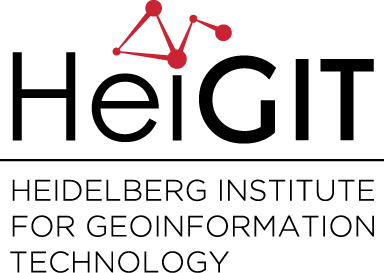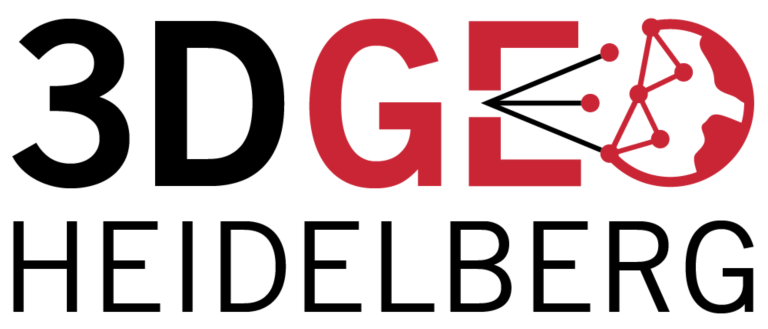Category: 3D
-
DGPF Annual Meeting 2017 – Visual impressions
Three talks from GIScience Heidelberg were given at the Annual Meeting 2017 of the DGPF (German Society for Photogrammetry, Remote Sensing and Geoinformation) on 9 March 2017. Thanks a lot to Benni, Tomás and Sebastian for the very nice talks. More technical infos on the presented research can be found in the previous blog post…
-
Call for Abstracts “3D-Punktwolken in der Geographie” – Deutscher Kongress für Geographie 2017 (Deadline 31. März 2017)
Wir laden alle herzlich dazu ein, einen Vortragsbeitrag (Abstract) zu unserer Fachsitzung “3D-Punktwolken in der Geographie – Erfassung, Analyse und Visualisierung” (LT6-FS4) für den Deutschen Kongress für Geographie am 30.9. – 5.10.2017 in Tübingen einzureichen. Für fachliche Fragen stehen die Fachsitzungsleiter Bernhard Höfle (Heidelberg) und Martin Rutzinger (Innsbruck) gerne zur Verfügung. Online Einreichung eines Abstracts:…
-
3rd PhD Colloquium of the DGK Section on Geoinformatics and the DGPF Working Group on Geoinformatics
On 7 March 2017 the 3rd PhD Colloquium of the DGK Section on Geoinformatics and the DGPF Working Group on Geoinformatics took place in Würzburg, Germany – organized by Prof. Jan-Henrik Haunert (Bonn) and Bernhard Höfle (Heidelberg). The presentations covered a wide range of topics (e.g. 3D indoor mapping, air pollution modeling, traffic time series…
-
Follow up: Final version of study “Characterizing tufa barrages in relation to channel bed morphology in a small karstic river by airborne LiDAR topo-bathymetry” available online
The final paginated version of the paper summing up our study “Characterizing tufa barrages in relation to channel bed morphology in a small karstic river by airborne LiDAR topo-bathymetry” (see initial post) can now be accessed by everyone via https://authors.elsevier.com/a/1UDhp3qItqy7- for free till February 04, 2017. Profe, J., Höfle, B., Hämmerle, M., Steinbacher, F., Yang,…
-
Results of study “Direct derivation of maize plant and crop height from low-cost time-of-flight camera measurements” published
In agriculture, information about the spatial distribution of crop height is valuable for applications such as biomass and yield estimation, or increasing field work efficiency in terms of fertilizing, applying pesticides, irrigation, etc. Established methods for capturing crop height often comprise restrictions in terms of cost and time efficiency, flexibility, and temporal and spatial resolution…
-
3rd PhD Colloquium of the DGK Section on Geoinformatics and the DGPF Working Group on Geoinformatics, 7 March 2017, Würzburg, Germany
Call for Abstracts for the 3rd PhD Colloquium of the DGK Section on Geoinformatics and the DGPF Working Group on Geoinformatics March 7, 2017, in Würzburg prior to the DGPF annual meeting The Section on Geoinformatics (Sektion Geoinformatik) of the German Geodetic Commission (Deutsche Geodätische Kommission, DGK) and the Working Group on Geoinformatics (Arbeitskreis Geoinformatik)…
-
Study published: “Characterizing tufa barrages in relation to channel bed morphology in a small karstic river by airborne LiDAR topo-bathymetry”
We are pleased to announce the publication of the study “Characterizing tufa barrages in relation to channel bed morphology in a small karstic river by airborne LiDAR topo-bathymetry” in the Proceedings of the Geologists’ Association. The manuscript is already available online (http://dx.doi.org/10.1016/j.pgeola.2016.10.004) The motivation of the study is the high value of freshwater tufas in…
-
Two new tools provided on GITHub: HELIOS (LiDAR simulator), VOSTOK (3D solar potential calculation)
On the GIScience GITHub, two new tools are now available: The Heidelberg LiDAR Operations Simulator HELIOS is a software package for interactive real-time simulation and visualization of terrestrial, mobile and airborne laser scanning surveys. Own virtual scenes can be generated by combining for example terrain models with other objects (buildings, vegetation). Own scan positions as…
-
Apply now: ISPRS Summer School of Alpine Research 2017: Close Range Sensing Techniques in Alpine Terrain
Download flyer (PDF) Objectives The main goal of the Joint Summer School 2017 is to provide participants with innovative practical and methodological skills to characterise complex terrain and objects using close-, near range and remote sensing techniques. The Summer School will be the second edition after a successful first version in 2015. Teaching Methods Theoretical…
-
Colloquium of Heidelberg Center for the Environment (HCE) starts with GIScience
The interdisciplinary colloquium series of the Heidelberg Center for the Environment (HCE) starts with GIScience by a talk of Bernhard Höfle about “3D Geodata in Environmental Research” on 24 October 2016 and was now announced via press release. Furthermore, Alexander Zipf will give a talk about “Crowdsourcing of Geodata for Humanitarian Aid” on 14 November…
-
ISPRS Innsbruck Summer School of Alpine Research 2017 – Close Range Sensing Techniques in Alpine Terrain
Do you want to learn a lot about geodata acquisition and sensing, in a beautiful and challenging high mountain environment, enjoy the evenings with colleagues and professors above 2000m altitude? If yes, here you can find the answer: Join our summer school in 2017 (16-22 July)! https://www.uibk.ac.at/geographie/summerschool (Flyer) This summer school is designed for any…
-
Call-for-Papers: 37. Wissenschaftlich-Technische Jahrestagung der DGPF
The Call-for-Papers is available for the Annual Meeting 2017 of the German Society for Photogrammetry, Remote Sensing and Geoinformation (DGPF) in Würzburg-Schweinfurt, 8-10 March 2017. Featured topic of the conference is Cultural Heritage. Deadline of submission is 31 October 2016!


